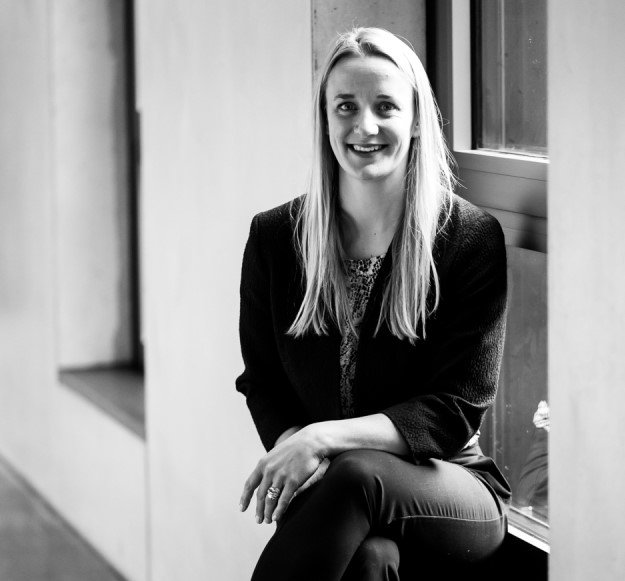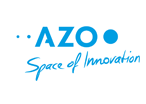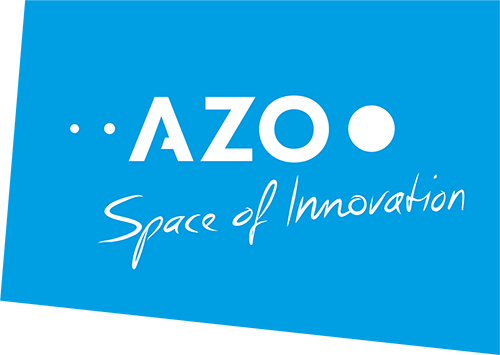A quick google for ‘silent killers’ spits out a list of extremely unpleasant diseases without warning signs or only subtle symptoms. A glaring omission from this list is a global threat that is associated with pneumonia, chronic pulmonary disease, lung cancer, heart disease, strokes and even depression.
Almost 8% of all deaths globally can be attributed to the effects of long-term exposure to air pollution, of which in 2016 almost 600,000 were children under the age of 5. 2.4 million were heart disease victims and 1.4 million were stroke victims.
The World Health Organisation reports that 91% of the world’s population lives in places where air pollution exceeds WHO guideline limits. One of these places, Chad, has the worst rate by a long way, with 5,300 deaths per 100,000 attributable to ambient air pollution.
Of course, some of the poorest areas of the world are most severely affected. Dirty cooking stoves and fuels contribute to 3.8 million annual deaths, whilst three of the next five worst countries named on the list after Chad are within the top ten poorest African countries.
Further west, however, Europe is not without its terrors. The UK has been threatened with a EUR 400m fine by the EC and cities including London, Lyon, Berlin and Barcelona have all been highlighted by regulators for their unacceptably high air pollution levels.
These tiny airborne nasties, measured on a rather unintelligible index of 0-500, with varying health effects from ‘satisfactory’, ‘little or no risk’ to ‘emergency conditions’ affecting ‘the entire population’, are having a massive but largely invisible effect on our health.
Given the amount of media attention afforded these microscale but potent particles, not to mention the emergence of new phrases including ‘dieselgate’, ‘Abgasskandal’, and even artistic creations inspired by (or rather horrified by) the taste of city exhaust fumes [search >> edible geography and ‘smog meringues’], it is rather surprising that there isn’t more focus on making this somewhat invisible killer, well, rather more visible.
Hawa Dawa, the winner of the 2018 Copernicus Masters BMVI Digital Transport Challenge, considers the problem to be that prevalent monitoring technologies and approaches are simply not fit for purpose to be able to drive useful insights towards doing so. We have observed that the data collected and published by such techniques do not yield the insights required, firstly to understand where pollutants are, how they behave, what conditions influence their behaviour, and secondly to guide decision-making and investment in measures to tackle air pollution.
Far from it: The technologies for monitoring air quality range from:
- Highly reliable and granular but at a high cost and complexity, therefore only able to measure at a handful of single points across a city (not enough data points to build up a dynamic, spatially actionable picture across an entire city)
- Manual, weekly, monthly or annual averages (limited time sensitivity, dependency on a human to collect, analyse and return the sensors)
- Low cost but low reliability B2C or open source air quality sensors, which cannot be considered robust or dense enough in their coverage to provide reliable, truly actionable data to tackle
In spite of lacking the intel to be able to really target investment, some of the world’s largest cities are already taking firm and visible action. London’s Mayor Sadiq Khan says he will do ‘everything within his power to tackle London’s toxic air crisis’ and has already implemented the world’s first 24-7-operating ultra-low emission zone in the city. New York’s ambitious economic development plan commits to have the cleanest air of any large US city by 2030. Along with the second and third largest cities in China, Beijing beat its pollution reduction targets in 2017, but these were already 500% higher than the World Health Organisation’s recommended annual averages.
So the ambition is there. Some steps are being taken, but the anticipated impact of measures isn’t necessarily matching the outcome of such investment on the ground. We believe that taking air quality monitoring to the next level, moving away from discrete or local, non-ubiquitous measurements, from smog and smoke observation, business scandals and figures in reports, requires the proper fusion and understanding of multiple datasets. It requires ground pollution measurements to be combined with socio-economic data and land use, with mobility and traffic data, with atmospheric and climatic data such as weather and wind and finally with historic time series and other geodata, including hourly and daily satellite data.
There are of course challenges to generating, accessing, fusing and working with all of this data, however. One of these is that to make targeted and effective investments to mitigate for and reduce air pollution, we cannot now leave air quality measurement to simple cause and effect observation. Air quality is largely invisible and requires a more granular and comprehensive approach in order to improve it.
Hawa Dawa’s Arabic name and bird logo aren’t chance occurrences. Around 50% of the global population (at least those speaking Arabic, Indonesian, Pashto, Persian, Swahili, Turkish and Urdu) would roughly understand the translation of hawa dawa to ‘air purity’ or ‘air medicine’ and be able to comprehend our mission. This mission has roots in the story of a physician named Abū Bakr Muḥammad ibn Zakaryā ar-Rāzī who, tasked with making the decision on where to locate and build a hospital in 9th Century Baghdad, placed slabs of raw meat at various locations around the city, before honing down on the city district where the meat was least visibly affected by the ambient air pollution.
Fast-forwarding a few centuries to the 20th, where canary birds were used in the mines as an early warning system for detecting poisonous gases, and where simple yet scientific observations played a critical part in risk assessment: if the canary showed signs of distress or even perished, the miners knew to evacuate quickly.
So although these historical precedents make for an interesting air quality monitoring ‘heritage’, Hawa Dawa isn’t leaving anything to chance. Our analytics are the result of sophisticated modelling and combine data from our state-of-the-art IoT sensor technology with highly reliable, if incomprehensive public air quality data to provide a reference data for certain locations. Satellite data fills in the gaps between our measurement points on the ground and verifies, from space downward, what we’re measuring on the ground, with other geospatial data to increase the number of and test the variables associated with pollutants and their behaviour and to help us better design our spatial models.
The steps to being more comprehensive and granular require significant amounts of effort and a deep understanding of pollutant behaviour, sensor cross-sensitivity and physics, access to large, historical datasets and significant data processing and analytics capability. We are effectively measuring something we cannot and do not know. We’re actually contributing to and generating part of this big data set ourselves in order to obtain wider insights, and we’re using a series of inputs or variables within our model to be able to build up a more detailed picture of pollution concentration. We’re testing and improving the plausibility of this data with our sensor network and dealing with the challenges of overfitting where there are no existing data points.
In the geo-spatial context, defining the inputs and variables most relevant to air quality requires more thought than might be initially assumed. One example might be the interaction between a pollutant and its natural environment. How is a green space defined? Is it long or broad, triangular or round, dense or sparse, high or low? What impact does each of these considerations have on the behaviour or predictability of a tiny piece of black carbon? All of this ambiguity means that what we’re doing is scientifically much more interesting – we’re looking at the relationship between multiple elements, not just linear but almost 3-D, even ‘multiple-D’. This is a little bit more like qualitative psychology and a lot less like understanding the triggers a customer needs to experience before buying a product.
In the earth observation context, we need to sharpen rather low-resolution images as they are delivered, using geo-spatial parameters we do know, which give us a fairly strong indication of what pollution is likely to be doing. This works well for some pollutants, where we can link dispersion behaviour to street patterns and urban geography, but not so well for others where dispersion takes place over a broader area and cannot correlate directly to urban objects and layouts. Conversely, when it comes to forecasting, the pollutants that are easier to downscale from satellite data pose opposite challenges, since they’re very much linked to local and granular, more unpredictable conditions and incidences, whereas others disperse more slowly and are more closely linked to weather patterns and therefore easier to predict.
The opportunities satellite data offers for developing our analytics platform even further are very significant. Not only can we provide air quality data for locations that have not previously had access to it and therefore provide crucial evidence to help educate about and mitigate for the risks of air pollution – (this ties back nicely to the Chads and the Somalias and the Cameroons of this world, sitting in the world’s poorest list and topping the countries with the highest air quality death rates) – it also opens up a wealth of new opportunities on multiple geographical scales. Broadly, these cover improving our high resolution urban models by a significant factor for some pollutants, to being able to compare different cities and regions across the world for strategic health and business decision-making purposes, as well as catastrophe detection, illegal materials burning, even emissions trading.
Being supported by various sector partners including ESA Business Incubation Centre (BIC) Bavaria and UK-based Seraphim Capital, a space-focused VC, gives us the opportunity to continue to build up our expertise in this developing area, combining our experience across epidemiology, climatology, GIS and data analytics to become a viable player in the downstream satellite services area. Working with customers such as Siemens, MunichRe and other large infrastructure players means we’re able to translate our data into actual tools and policy to reduce pollution. Critically, being able to pull together all of the various data pieces in this larger geospatial picture in an intelligent way means we’re one step closer to pushing air quality into the mainstream.
We aim to touch the everyday of navigation (“how do I re-route traffic through my city to help reduce pollution hotspots”), transportation (“how do I best manage my airport transit fleet to lower overall emissions levels”), fitness (“what route should I take on my run to keep exposure to exhaust fumes as low as possible”), insurance (“how does where I live, where I commute to and how I commute impact my insurance premium”), tourism (“which locations have the lowest pollution levels at the time of year when I want to take holiday”), rental and housing (“which part of my city has the lowest sound and pollution levels for my family”) business (“how can I include health factors in my decision on where to relocate my staff”) and city planning (“where should we locate a new school so that pupils can walk and cycle to and from without being exposed to dangerous pollutants”).
We continue to strive to make pollutants and their dangerous impact on health visible and comprehensible, whilst providing citizens, cities and corporations with tools to directly target and reduce this major environmental health risk.
About Cassi Welling
 Cassi is COO at Hawa Dawa, involved in all aspects of the business from new opportunities scouting to fundraising and internal process improvement. She worked previously for Europe’s largest clean-tech accelerator as programme manager, spent some time with the management team and TV marketing teams at language learning company Babel and prior to that at UK-based economic consultancy Regeneris, assessing the impact of new investment, development and regeneration schemes, as well as the stimulation of high-tech growth sectors.
Cassi is COO at Hawa Dawa, involved in all aspects of the business from new opportunities scouting to fundraising and internal process improvement. She worked previously for Europe’s largest clean-tech accelerator as programme manager, spent some time with the management team and TV marketing teams at language learning company Babel and prior to that at UK-based economic consultancy Regeneris, assessing the impact of new investment, development and regeneration schemes, as well as the stimulation of high-tech growth sectors.




